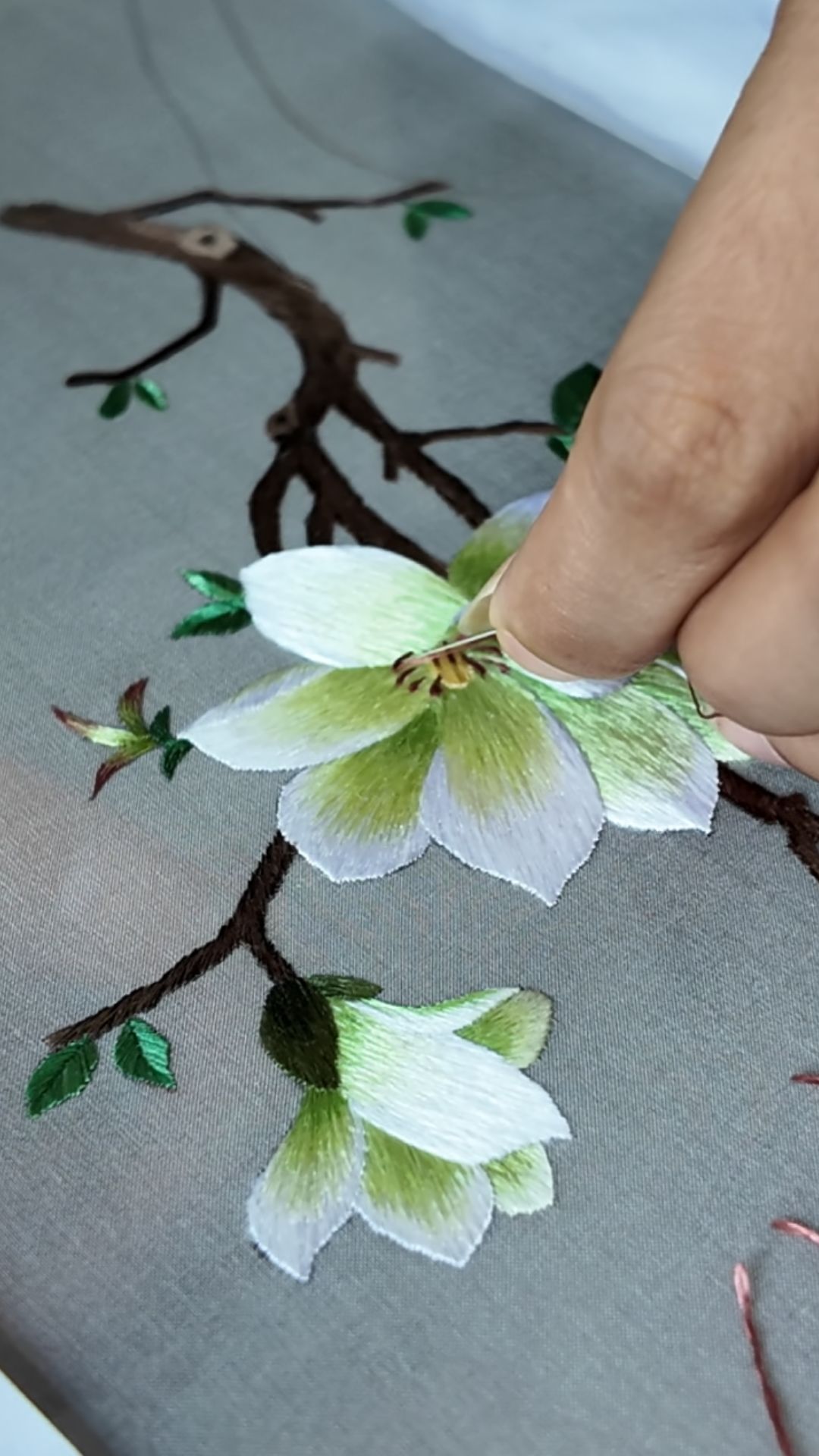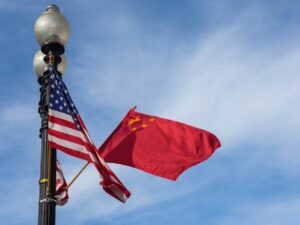
The embroidery arts of Jiangsu Province are known for their refinement, precision and beauty, and are one of China’s most revered traditions. The art is considered an integral part of the region’s cultural heritage.
The different styles of traditional Chinese embroidery
There are different ways of doing embroidery. First, there is Suzhou embroidery (苏绣 – Sūxiù). This is the most famous of the Jiangsu styles and one of the four major embroidery styles of China. It is known for its use of bright colours, elaborate details and delicate patterns. The works often depict landscapes, flowers, animals and portraits with great precision and realism. Extremely fine silk threads and techniques that allow for three-dimensional and shading effects are used for this technique, which gives an appearance of depth and realism to the images.
Then there is Wuxi embroidery (无锡绣 – Wúxīxiù). Also known as Xi embroidery (席绣 – Xíxiù), this style is known for its elegance and sophistication. Wuxi is a region famous for the quality of its materials, the flexibility of its stitches and the complex production processes. This embroidery stands out for its delicacy in the representation of flowers, such as the magnolia, in which they use fine lines of stitches that create soft and subtle patterns on the silk.
Yancheng (盐城绣 – Yánchéngxiù) is a lesser-known style of embroidery than Suzhou or Wuxi. It focuses on the depiction of more popular and local themes, generally depicting scenes of rural life, regional fauna and flora. The techniques employed in Yancheng are characterised by their simplicity and by a more rustic and authentic approach compared to more refined styles such as Suzhou.
Another traditional style of embroidery in Jiangsu is Changshu (常熟绣 – Chángshúxiù). This style is characterized by the use of soft colors and more subtle techniques. Changshu is known for its depictions of landscapes and natural scenes. Shading techniques and layering of the fabric are often used, with the aim of creating a sense of movement and life in the embroidered scenes.
The history of embroidery in China is thousands of years old. Embroidery has been an integral part of Chinese culture, used both to adorn the clothing of the nobility and to embellish everyday objects.
In ancient times, it was mainly used to decorate the clothing of the country’s high nobility. The earliest pieces of embroidery found in ancient tombs show simple but decorative patterns made with silk threads on linen.
During the Han Dynasty, embroidery evolved into a more developed art form. At this time, more complex colors and patterns began to be introduced. Embroidery decorated not only clothing, but also screens, banners, and other decorative items in homes. Common motifs included dragons, flowers, birds, and symbols expressing good fortune.
The reign of the Tang Dynasty could be said to be a golden age for embroidery in China. Techniques were perfected and a wide range of regional styles emerged. By this time, embroidery was characterized by its beautiful colors, intricate designs, and the influence of painting in its composition. Embroidered garments were highly valued and were often given as tributes.
Under the Song, embroidery schools developed to pass down techniques through generations. Craftsmen of this period began to experiment with three-dimensional effects and shading, to give a sense of depth and realism to their works.
During the Ming and Qing dynasties, it became a symbol of social status. The patterns and colours used in clothing designs indicated the rank and social position of the person wearing it. Imperial embroidery from this period is some of the most elaborate and detailed in Chinese history.

Source: https://reporteasia.com/cultura/tradicion/2024/08/18/arte-bordado-tradicional-china/

